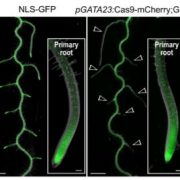
Introducing CRISPR-TSKO: A Breakthrough in Precision Gene Editing
Research, The Plant Cell, The Plant Cell: In BriefAn excellent way to explore the function of a gene is to knockout its expression and see what happens. The development of the targeted gene editing system CRISPR (clustered regularly interspaced short palindromic repeats) has triggered scores of gene knockout studies. CRISPR is based on a defense system…
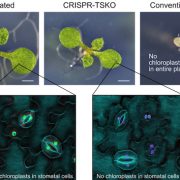
Tissue-specific Gene Elimination in Plants
Research, The Plant Cell, The Plant Cell: In a NutshellDecaestecker and Buono et al. develop a system for tissue-specific gene knockout to enable phenotypic analysis of context-specific gene function.
Plant Cell https://doi.org/10.1105/tpc.19.00454
By Ward Decaestecker, Rafael Andrade Buono, Moritz Nowack and Thomas Jacobs
Background: As plant molecular…

Mellowed Yellow: WHITE PETAL1 Regulates Carotenoid Accumulation in Medicago Petals
Research, The Plant Cell, The Plant Cell: In BriefCarotenoids are tetraterpenoid (C40) lipophilic compounds that are widely distributed in nature and play key roles in pigmentation, photosynthesis, and development (Nisar et al., 2015). Detailed biochemical and genetic analyses have uncovered the carotenoid biosynthetic pathway, which generates a diverse…
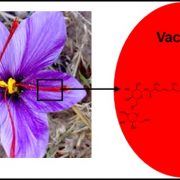
Saffron Red Pigment Is Stored in Vacuoles through Active Transport
Research, The Plant Cell, The Plant Cell: In a NutshellDemurtas et al. developed a high-throughput approach to identifying vacuolar transporters and used it to explore transport of crocins in saffron. Plant Cell https://doi.org/10.1105/tpc.19.00193
By Olivia C. Demurtas and Giovanni Giuliano
Background: The saffron spice is made of dried stigmas from…
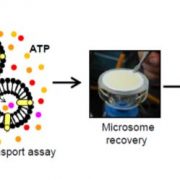
The ABCCs of Saffron Transportomics
Research, The Plant Cell, The Plant Cell: In BriefSaffron spice is prized for its aroma, flavor, and color. The latter derives from highly concentrated apocarotenoid glycosides called crocins. Accumulation of specialized metabolites like crocins often requires their sequestration in the vacuole to prevent cellular toxicity, feedback inhibition of…

A Plant Metabolon Efficiently Mass-produces Phytochemical Defenses
Research, The Plant Cell, The Plant Cell: In BriefWhen plants are under attack, they activate defense programs including the biosynthesis of chemical defense compounds. The biosynthesis of these phytochemicals has to occur rapidly and represents a major sink of nutrients and amino acids. How plants optimize the mass production of chemical weapons remains…
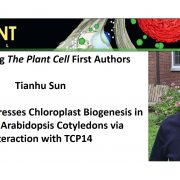
Recognizing Plant Cell first authors: Tianhu Sun
The Plant Cell, The Plant Cell: Author ProfilesTianhu Sun, fist author of ORANGE Represses Chloroplast Biogenesis in Etiolated Arabidopsis Cotyledons via Interaction with TCP14
Current Position: Post-Doctoral Associate, Plant Breeding and Genetics, Cornell University
Education: PhD in Biology and BS in Plant Biology from Nanjing University (Nanjing,…
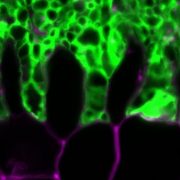
The common symbiosis pathway: More common than we thought?
Research, The Plant Cell, The Plant Cell: In a NutshellCope et al. show how lipochitooligosaccharides produced by the mycorrhizal fungus Laccaria bicolor enhance colonization of Populus roots Plant Cell https://doi.org/10.1105/tpc.18.00676
By Kevin R. Cope, University of Wisconsin–Madison (currently at S. Dakota State Univ.) and Jean-Michel Ané,…
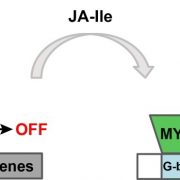
Different partners, different roles!
Research, The Plant Cell, The Plant Cell: In a NutshellYou et al. show that LEUNIG_HOMOLOG Facilitates Jaresponses via interactions with the histone acetyltransferase HAC1 and the Mediator complex coactivator MED25. Plant Cell https://doi.org/10.1105/tpc.19.00115
By Yanrong You and Chuanyou Li, Institute of Genetics and Developmental Biology, Chinese…

